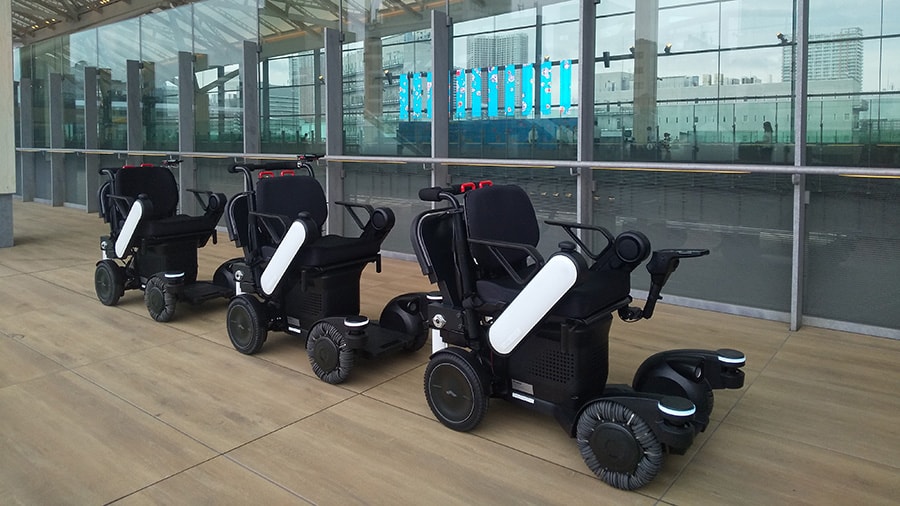Tech giant trials innovative self-driving mobility service at railway station in Tokyo
Panasonic is trialling a futuristic Mobility-as-a-Service (MaaS) model at the Takanawa Gateway Station in Tokyo, Japan, which uses the WHILL innovative powerchair with autonomous tracking to transport people freely around the station.
Working with JR East Group, Panasonic will be trialling the autonomous robotic mobility system from July to September 2020 at Takanawa Gateway Station, a new station that opened in March 2020. The trial takes place in a normally closed area of the station to verify their serviceability in a semi-outdoor environment.
Three units of the Panasonic robotic mobility device are used for the trial, with the leading robot controlled by a station employee, and the second and third robots following behind it automatically in a column.
The robots are equipped with an automatic braking system that enables them to slow down or stop completely when an obstacle is detected, as well as an autonomous tracking function that ensures that the robots at the rear follow the lead robot.
If a person walks in between the robots in motion, the rear robot will automatically make a temporary stop as its sensor detects the person and will only move again once it recognises the way is cleared.
The end goal is to develop a completely unmanned MaaS model within the station for a new way of living, using completely autonomous robotic wheelchairs, Panasonic adds.
A similar MaaS model has been trialled by WHILL at various airports across the globe, including the Haneda Airport in Tokyo, America’s JFK Airport, and the US’ Dallas and Canada’s Winnipeg international airports.
Earlier this year, Haneda Airport confirmed it would be the first airport to fully adopt the self-driving powerchair system.
WHILL’s self-driving wheelchairs allow users easily to navigate around airports independently, without needing assistance from friends, family or airport staff.
Panasonic has said that it will continue to watch the globally expanding MaaS market and will utilise its robotic technologies to create value for new urban environments, such as tour services for groups by taking advantage of the autonomous mobility device’s capability to transport multiple people together in a cluster.
To see the mobility service in action, watch the short video below:



